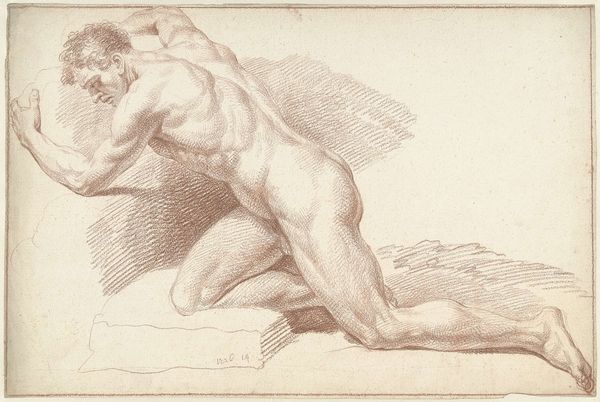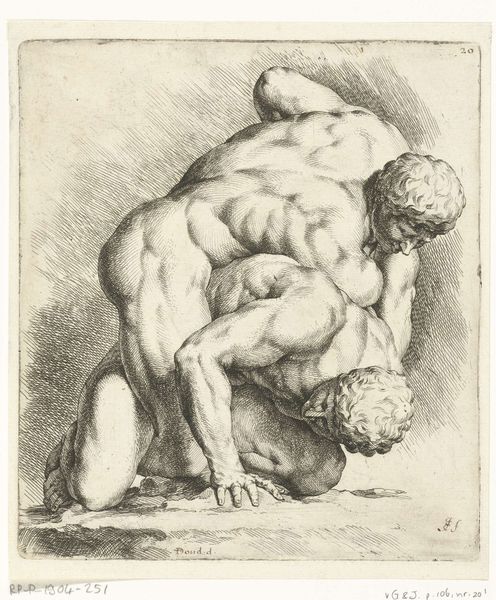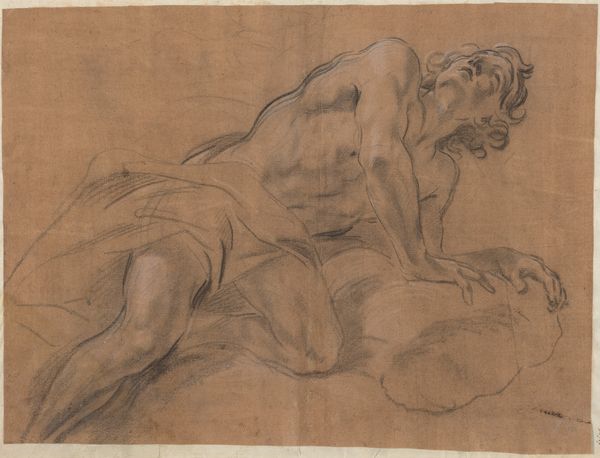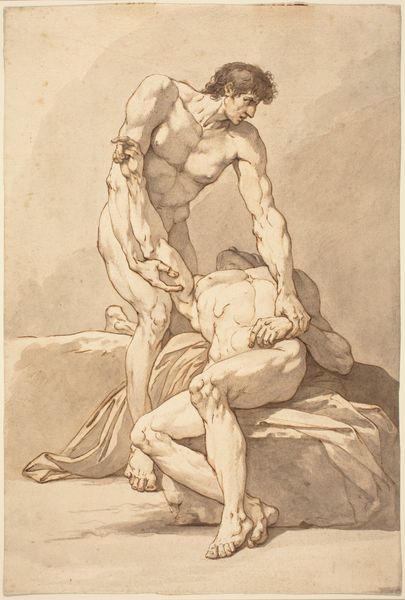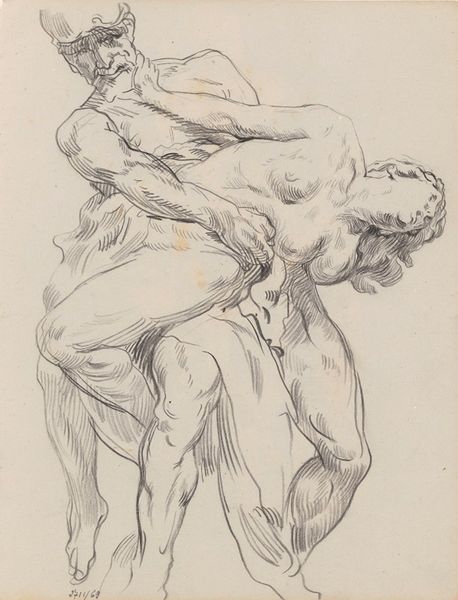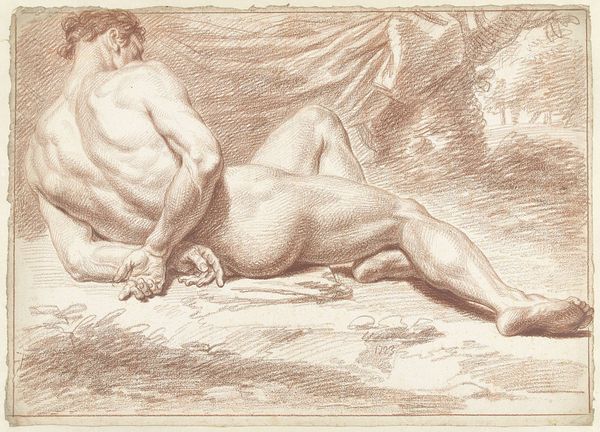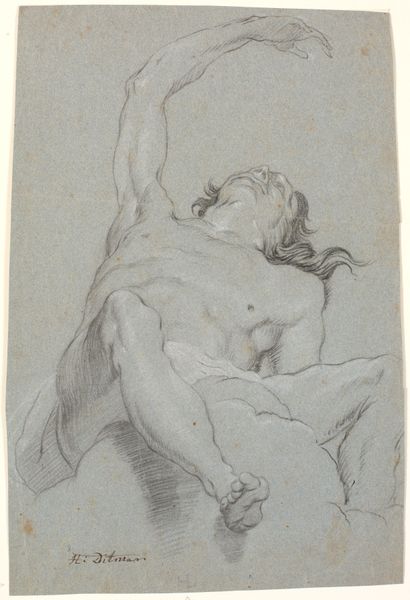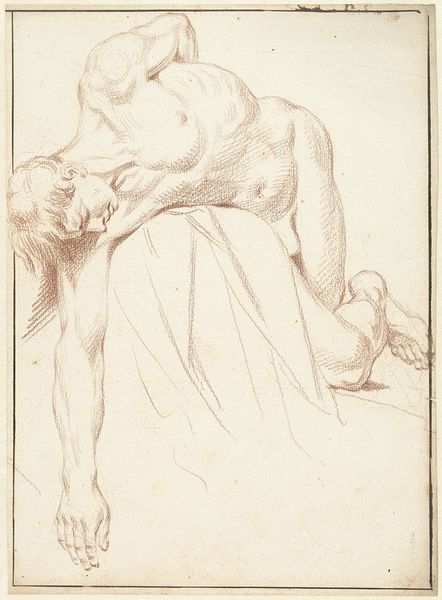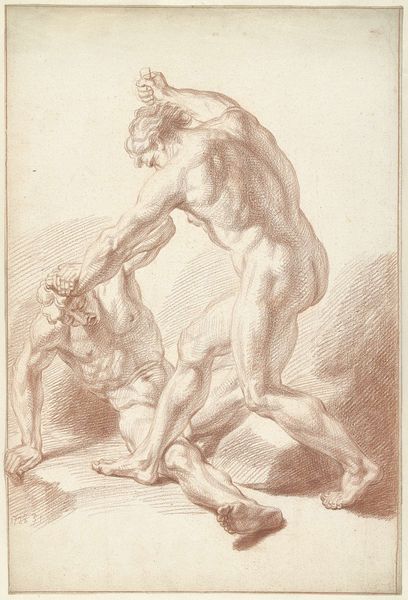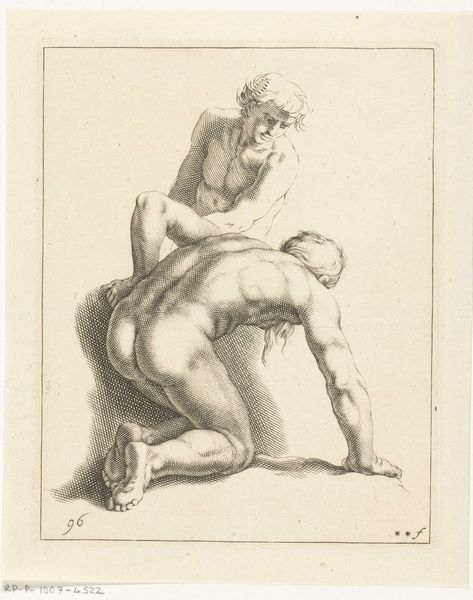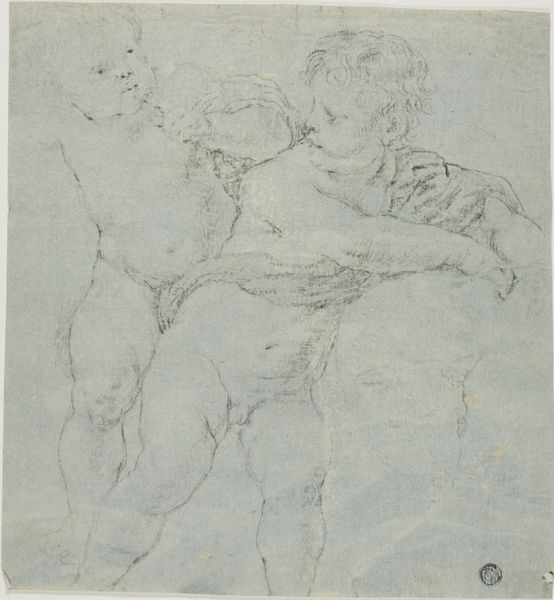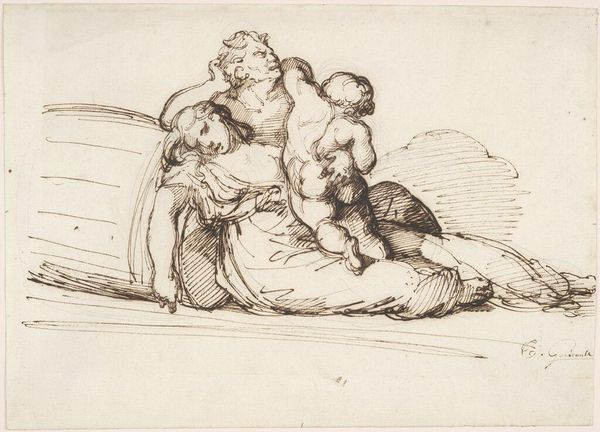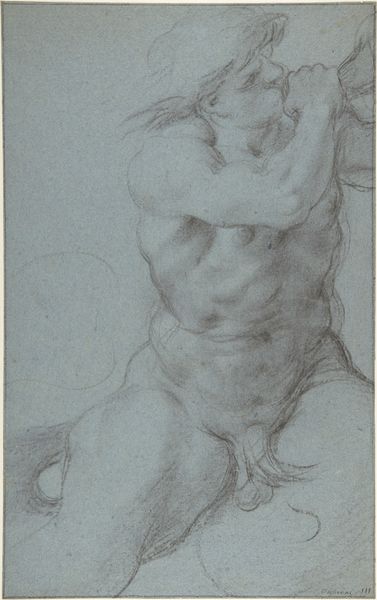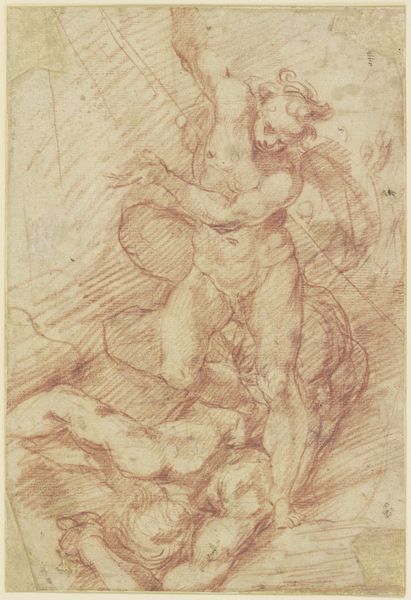
Dimensions: height 410 mm, width 363 mm
Copyright: Rijks Museum: Open Domain
Curator: This drawing, held here at the Rijksmuseum, is entitled "Studie van twee naakte mannen," or Study of Two Nude Men, attributed to François Boucher, and likely dating from 1713 to 1770. Editor: The tonality of this work is immediately striking, isn’t it? A sort of sanguine softness amidst the raw anatomical study, a somewhat detached view. Curator: Indeed. Note the clear, concise lines and precise shading—hallmarks of Boucher's Rococo aesthetic blended with academic draughtsmanship. The composition, however, reveals a study in contrasting forms. The standing figure dominates the composition from above. The one sitting assumes a submissive posture, which makes an interesting symbolic dynamic. Editor: I am drawn to the choice of medium here; dry media upon toned paper—we see the artist wrestling with immediacy, with capturing form almost impulsively. It speaks volumes of studio practices. Was this study intended for a larger work or valued in itself as material culture? That’s always on my mind. The labor inherent in creating these lines intrigues me as much as the final representation. Curator: Perhaps it's both. We know the Ancients had significant impact on the master, the emphasis on figuration and mastery of human form reflecting a debt to classical ideals that permeate Rococo. One must note, however, that such mastery over line and shadow can often become its own end. Editor: Precisely! How was it distributed? Who consumed these images of masculinity, and how did their interpretation hinge on the class and gendered views of the consumers? And the material conditions—were high-quality materials used, signifying artistic importance, or were these humble preparatory sketches on inexpensive supports? Curator: While the drawing evokes complex cultural interpretations that would have dictated consumption during its making, to be caught up in such analysis obscures how powerfully such works address core questions surrounding beauty, ideal form, and aesthetic experience. Editor: Perhaps. But I think the social, economic, and even the ecological footprint left by artwork cannot be disentangled from how beauty is seen—the materials, workshop, labor…it shapes beauty more than some realize. Curator: Well, our analyses reflect, as much as challenge, the work's enduring impact.
Comments
No comments
Be the first to comment and join the conversation on the ultimate creative platform.
